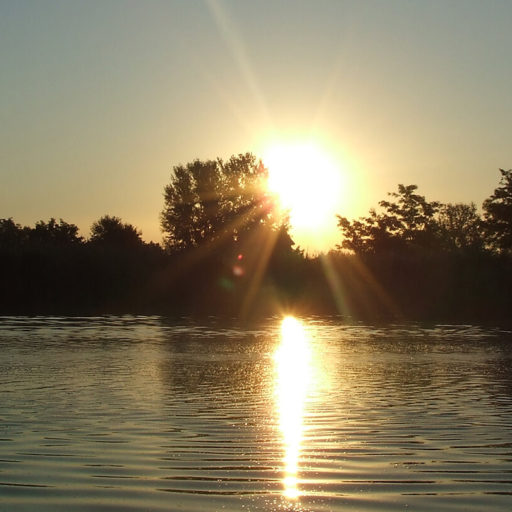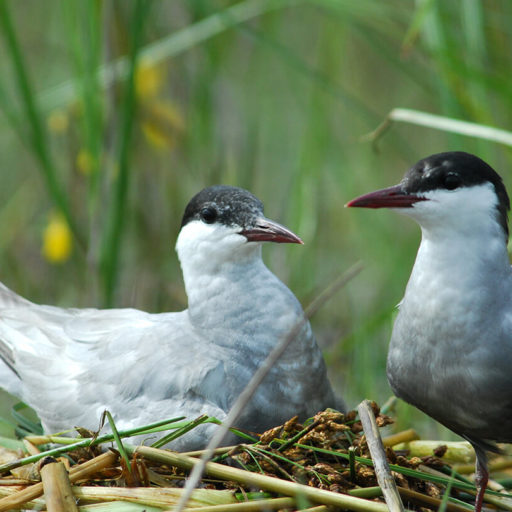The Ludaš lake reserve includes only the lake and the coast along the villages Ludaš/Šupljak, Hajdukovo and Nosa.
In addition to the preserved natural values (numerous species of plants, insects, fish and birds, typical for bar-wetland ecosystems), it also has preserved cultural values, archaeological sites, rural and church architecture, traditional crafts.
The beauty of the lake landscape with high reeds is the special value of this Reserve.
Ludaš lake is a complex of wetlands containing open water surfaces, reeds, and early types of grass communities. Steppe lake Ludaš, with the size of 328 hectares is unique in Serbia. Its shallow trough was formed by the work of winds at the touch of the sandstone and the wooden plateau.
Different types of soil and proximity to groundwater form a mosaic-like landscape, a large biological diversity within a small area. Ludaš lake was regionally known for its rich bird fauna already in the last century. Today, it is an important site for rest and food on the eastern migration path of birds.
Regular migration research (bird ringing station) has been organized since 1985. In addition to the bird's eye, among the rarity of the area are other animals, such as otters, turtles, rare insect species, rare species of plants (for example, wetland orchids), which are listed in the Red Book of Serbia protected areas.
The special nature reserve Ludaš, has been under protection since 1955. The reserve now covers an area of 846.33 hectares + 2002 hectare of the protection zone. It belongs to the 1st category of protection as a natural good of exceptional importance for the Republic of Serbia.
The reserve is also of international significance, and the lake was introduced into the list of Ramsar areas in 1977 (wetlands of world importance).
The lake's surroundings have been inhabited in the Stone Age, as evidenced by archaeological sites on the eastern coast of Nosa village, and then in various historical periods.
Today's inhabitants of the surrounding settlements are taking roots from immigrants from the 19th century who immigrated from the surroundings of today's Szeged.
Around the lake there are still old farms with preserved traditional buildings, trunk roofs, auxiliary buildings from pliers and mud and some old tools. The Catholic Church and the Parochy located at the Ludaš street are also considered valuable cultural monuments.
During the summer, the eco-camp, established in 1987, is traditionally held at Ludaš lake. Parallel to various natural and ethnological research, the task of the camp is also education in nature.
While younger participants discover nature by going around the environment and doing various exercises, students can gain experience by assisting in research work.
The tourist offer is in accordance with the status of the reserve, so visitors can enjoy the beauties of Ludaš lake and its living world.
Visitor Center Ludaš offers the possibility of enjoying the sightseeing paths:
"Čurgo" - western path and "Kireš" - the eastern track accompanied by guides - guardians of the protected area.
A large part of the lake can be seen by riding a bicycle as well. During the year, numerous seminars, trainings, as well as lectures for elementary, high school and faculty students are held at the Vizitor Center.
There is also a boat ride on the lake, visiting the island of Sandor Rozsa and enjoying the most beautiful sunsets. The tour that includes seeing the podolian cattles and water buffalos is especially interesting for children.
For those who want a gastronomic atmosphere, near the lake are restaurants with traditional cuisine. There are more and more playgrounds and various facilities for children. During the year, in the reserve and its surroundings, numerous manifestations are held: Days of the Village, Festival of Garlic, Days of Rozsa Sandor, Traditional winter cutting of cane, Race of donkeys in Bački Vinogradi and many other important events.
The most important date for nature protection is the Ludaš Day - March 28, when Ludaš lake was recorded in the list of significant wetland habitats in 1977 - and was proclaimed Ramsar Habitat on an area of 593 hectares (under number 137) - due to significant habitats for breeding birds and research ornithological station that already existed at Ludaš.
Hajdukovo, Prespanska 12
+381 (0) 24 753 570
office@palic-ludas.rs
www.palic-ludas.rs






